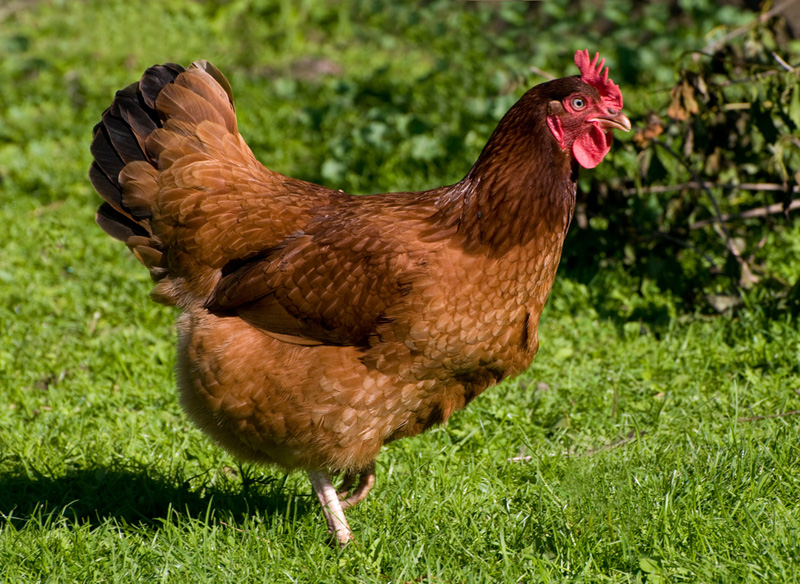Chickens, Info Guides
Rhode Island Red Chickens
Rhode Island Reds make great pets and are therefore incredibly popular as backyard chickens. They are efficient egg layers and can also be farmed for their meat.
They also make wonderful family pets. They are easy to care for, cold hardy and have a fun personality.
Rhode Island Red Chicken Breed Profile
Rhode Island Red chickens were originally bred in the late 1800’s in Little Compton, Rhode Island, USA. They were created by crossing various breeds including Asian Malays and Italian Brown Leghorns.
They are the state bird of Rhode Island.
Rhode Island Reds were bred as a dual purpose bird. This means they are suitable to farm both for egg production (as they are a good layer) and for meat production (as they have a heavy build).
Whilst still a dual purpose breed, the modern day Rhode Island Red has been bred with a greater focus on their egg laying qualities.
After World War II, breeders were divided into two groups – developing the breed for the commercial egg laying industry and traditionalists maintaining the heritage strain.
Commercial varieties are bred for maximum egg production, to increase profits. They will still lay if contained but are active foragers and prefer a free range environment.
If you buy eggs from the grocery store, there is a good chance it was laid by a commercial variety of the Rhode Island Red. They are rarely bred commercially for meat production.
Meanwhile, traditionalists have tried to keep Rhode Island Red chickens as they once were (aka. heritage strains).
Breeding these commercial varieties has made heritage breed Rhode Island Reds a rare breed.
There is also a Rhode Island White chicken but it is a different breed.
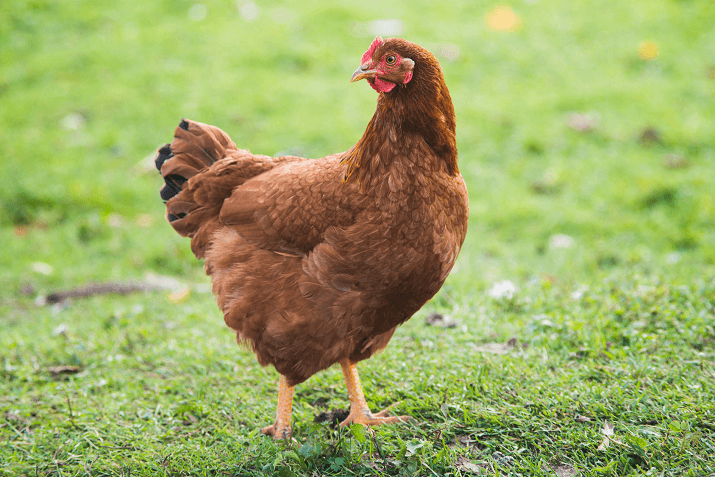
Rhode Island Red Colour Tone
Rhode Island Red chickens are a light red to tan colour with red beaks and yellow legs.
Rose Comb Vs. Single Comb
There are two types of Rhode Island Red chickens. They are different varieties but are not a separate breed.
There is a single comb variety Rhode Island Red. This means their comb is a single row with spiked points along the top. Like a chicken mohawk! The number and shape of the spikes can vary between birds.
There is also the rose comb variety Rhode Island Red. The comb is smaller, flatter and closer to the birds head. It has lots of little spikes all over. Rose comb Rhode Island Reds get this trait from their Malay chicken heritage.
Appearance
The Rhode Island Red breed has a long, rectangular body with a broad chest. Their back appears to be very flat. They have yellow skin and feet but a brown beak.
Their comb, wattles and ear lobes are red. It is also red around their eyes.
Size
Rhode Island Reds are a very large chicken, making them an excellent breed to farm for meat.
A standard hen weighs around 3kg and a rooster around 3.8kg.
Rhode Island Red chickens also come in a smaller, bantam variety. A bantam hen weighs around 850g and a bantam rooster around 1kg.
Feather Colours
Rhode Island Red chickens have dark red feathers.
The colours can vary between birds. Whilst they are all dark red, some are a lighter rust colour and some are nearly black.
Rhode Island Red chicks have yellow, baby feathers with a rusty red tinge.
Eggs
If you want more eggs, considering adding a Rhode Island Red to your flock! Their egg laying ability is a big reason why they are so popular with backyard chicken owners.
Egg Colour and Size
A Rhode Island Red hen lays light brown eggs. They are very large in size.
The colour of an egg is determined by the breed of chicken, not by the colour of their feathers. So even if their feathers are a darker or lighter red colour, Rhode Island Red hens always lay light brown eggs.
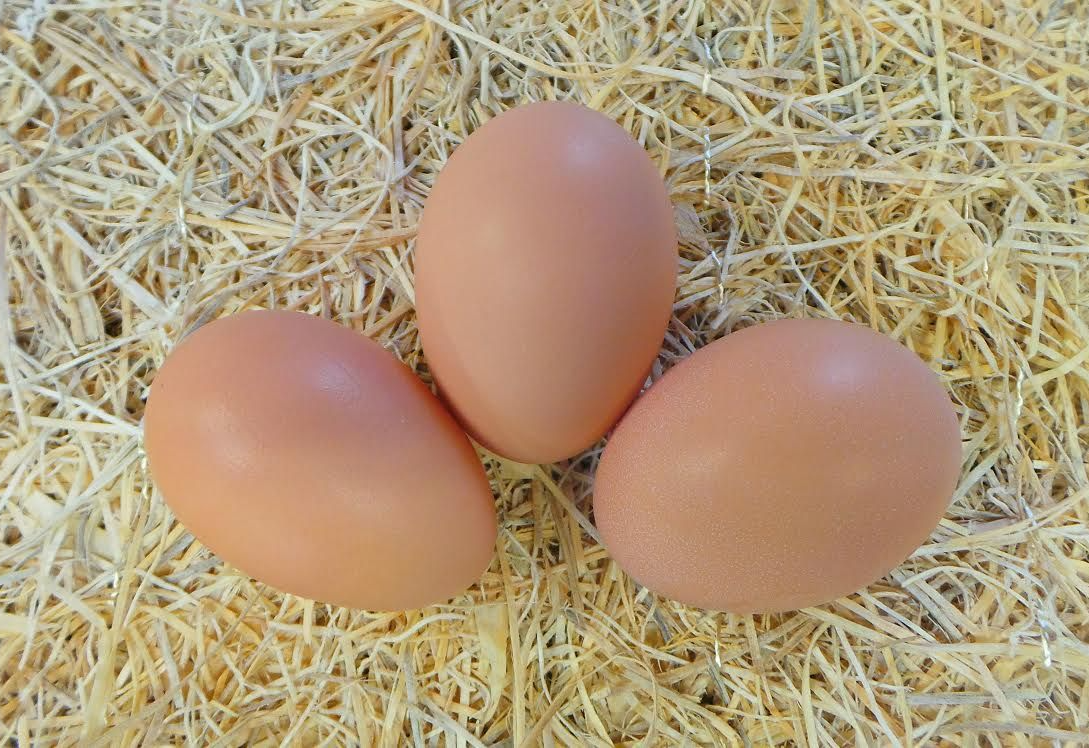
Rhode Island Red Chicken Eggs
Rhode Island Reds are a dependable choice for brown egg layers
Egg Laying
Rhode Island Red hens will lay approximately 270 light brown eggs per year. That is 5 eggs per week per hen!
The birds typically begin laying when they are between 4 and 5 months old. This is earlier than many other breeds.
Most chicken breeds will stop laying eggs completely in colder months but not Rhode Island Reds! They often continue to lay throughout winter although realistically their egg production will decrease.
Like all birds, they will stop laying when they are moulting. This is usually for 6 to 12 weeks every autumn. During this time, chickens are using all their nutrients to replenish their feathers and are unable to also produce eggs.
Keeping Rhode Island Red Chickens as Pets
Rhode Island Red chickens are not only prolific layers and suitable to farm for meat, but also one of the best birds to keep as a family pet.
Most Rhode Island Red chickens are very easy to care for, making them a popular breed for backyard chicken keepers.
They don’t require any complicated or special care and very rarely get sick. If you are looking to own chickens for the first time, the Rhode Island Red may be for you!
Rhode Island Reds have a hardy nature. They are suitable for most Australian climates as they can handle both extremely hot and cold temperatures.
Temperament
Rhode Island Red hens have big personalities! They are friendly, confident and happy to be around humans. This makes them a good pet for families.
They can be energetic and quite loud compared to other birds.
If you mix Rhode Island Red chickens in with other breeds, they will be at the top of the pecking order and may bully more docile birds.
Rhode Island Red roosters are known for being particularly aggressive. They are very protective and territorial, especially in breeding season.
If you have a family with small children, we do not recommend keeping a Rhode Island Red rooster as part of your backyard flock.
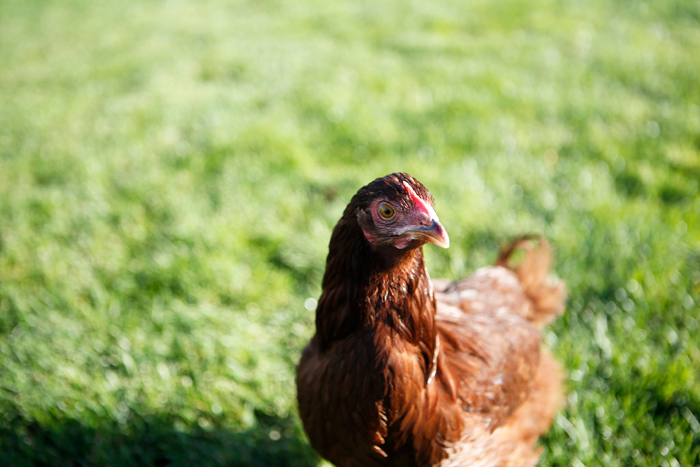
Rhode Island Red Temperament
This chicken breed are often very energetic and loud compared to other birds.
Caring for your Rhode Island Red Chickens
If you are planning to keep Rhode Island Reds, there a few things you will need to do to look after them.
You will need to give your Rhode Island Red chickens fresh food and water daily. We recommend using an automatic treadle feeder to protect food from being spilled or eaten by wild birds.
You will need to clean out the coop and nesting boxes every week and replace all bedding.
If you let your chickens out to roam during the day, make sure that they are all tucked up safe and sound in their coop each night and that the door is securely latched to prevent predators gaining access.
Keep an eye on your flock to make sure they are healthy and happy. If you suspect one of your girls may be unwell, take them to a vet to be checked properly.
You should worm them regularly and vaccinate them if there are known illnesses in your area.
Breeding
Rhode Island Reds don’t go broody as often as other hens. Therefore, they aren’t the best breed choice if you are looking to hatch fertile eggs.
Some Rhode Island Reds will go broody. If you want to avoid this, remove eggs from their chicken coop daily.
If they do sit on and hatch their eggs, Rhode Island Red hens can be very protective mothers.
Rhode Island Red chicks usually hatch after 21 days.
Rooster vs Hen
Most Rhode Island Red chicken owners only keep hens. You do not have to have a rooster as part of your backyard flock. Hens are popular partly because of their egg laying ability and partly because of their temperament.
In general, hens are easier to handle and care for. They are friendlier and more tolerant of being near people.
In comparison, Rhode Island Red roosters have a poor temperament. They may crow loudly, especially in the early morning, which may annoy you or your neighbours. Some also grow sharp spurs on their feet which can injure you.
Despite this, if you are still thinking about getting a Rhode Island Red rooster, we recommend you contact your local council first. Many councils don’t allow backyard chicken owners to keep roosters or they have strict rules in place for ownership.
Chicken Coops
Rhode Island Reds love to free range. They are excellent foragers and enjoy pecking around a big yard.
While it is ideal to give them a free range environment some of the time, the Rhode Island Red still needs a chicken coop. This gives them a place to lay their eggs and securely rest at night time.
Choose your backyard chickens a high quality coop made from rot resistant timber and with a waterproof asphalt roof.
The size you need will depend on how many chickens you have. Make sure there is enough room on the perches inside so they all have somewhere to roost at night time.
Look for a chicken coop with large opening doors and a slide out metal tray. This will make cleaning out the coop much easier.
It is important to be predator savvy to protect your feathered friends. Choose a chicken coop with strong wire mesh on the sides, to keep anything from breaking in to hurt your flock. Adding a wire mesh floor onto the base can help to stop foxes or rats from digging their way in underneath.
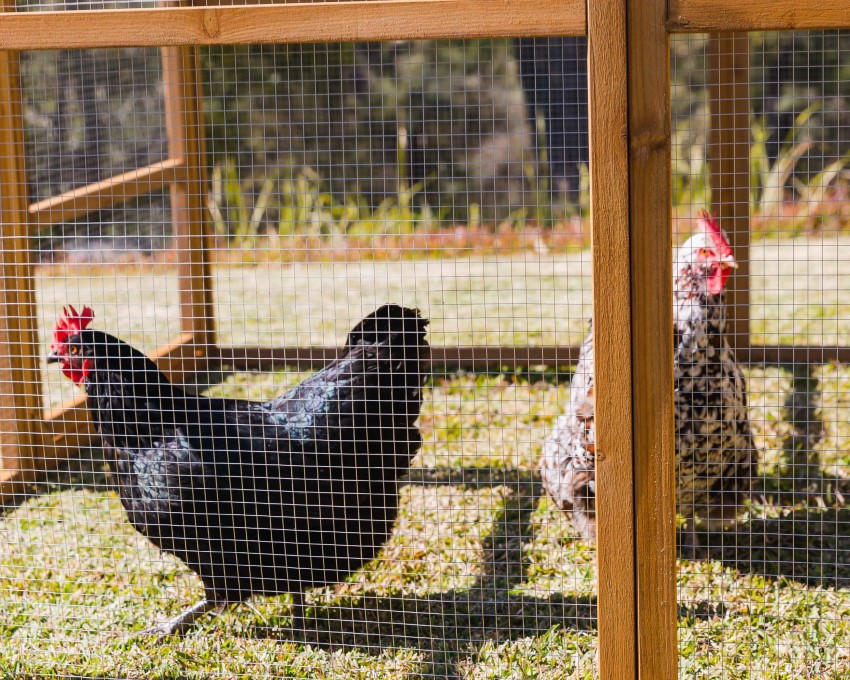
Get the right size chicken coop
Make sure to choose a quality chicken coop with a run area and then let them out into a larger yard space
Nesting Box
It is important your chicken coop has nesting boxes. Rhode Island Red chickens will naturally want to lay their eggs inside a nesting box as it helps them feel safe and protected.
Nesting boxes are also great for chicken owners as you don’t have to spend time searching your whole yard looking for eggs. They decrease the chance of eggs being broken or stepped on too.
Choose a chicken coop with nesting boxes built onto the side with an opening lid. This will make collecting eggs much easier as you don’t need to go inside the coop to collect them.
You need one nesting space for every two or three Rhode Island Red hens. They don’t all lay their eggs at the same time and are usually happy to take turns and share nesting boxes.
Buying Rhode Island Reds
Rhode Island Red chickens can be purchased from professional or backyard breeders. Some breeders are able to transport the chickens to you for an extra fee.
Many local farm supply or feed stores will also sell Rhode Island Reds.
Most owners buy point of lay chickens. This means they are at the age where they are about to start laying their eggs (around 4 months old). Point of lay Rhode Island Red chickens typically cost $15-40 each.
Day old Rhode Island Red chicks will cost around $10 each. While many sellers will sex them, there is always a risk you may end up with some roosters.
You will need a heating source to keep them constantly warm at 33 degrees. You will also need to keep them separate from adult chickens as they may try to harm the chicks.
Buying fertile Rhode Island Red eggs is the cheapest way to buy them, at around $12-24 per dozen. Hatching eggs can be exciting and a great way to teach children about where chickens come from.
However, it is a lot more work and isn’t guaranteed that all of the eggs will hatch. You will need to have a good broody hen or an incubator to hatch them.
Please note Rhode Island Red prices will vary a lot based on location, the time of year, demand and availability.
In summary, Rhode Island Reds are a great breed to keep as pets. They love free ranging and interacting with humans. They are one of the best breeds for egg production.
References
https://www.poultryaustralia.com.au/rhode-island-red
https://treatsforchickens.com/blogs/treats-for-chickens-blog/5-best-brown-egg-laying-chicken-breeds-treats-for-chickens?_pos=1&_sid=a7dfca19c&_ss=r




